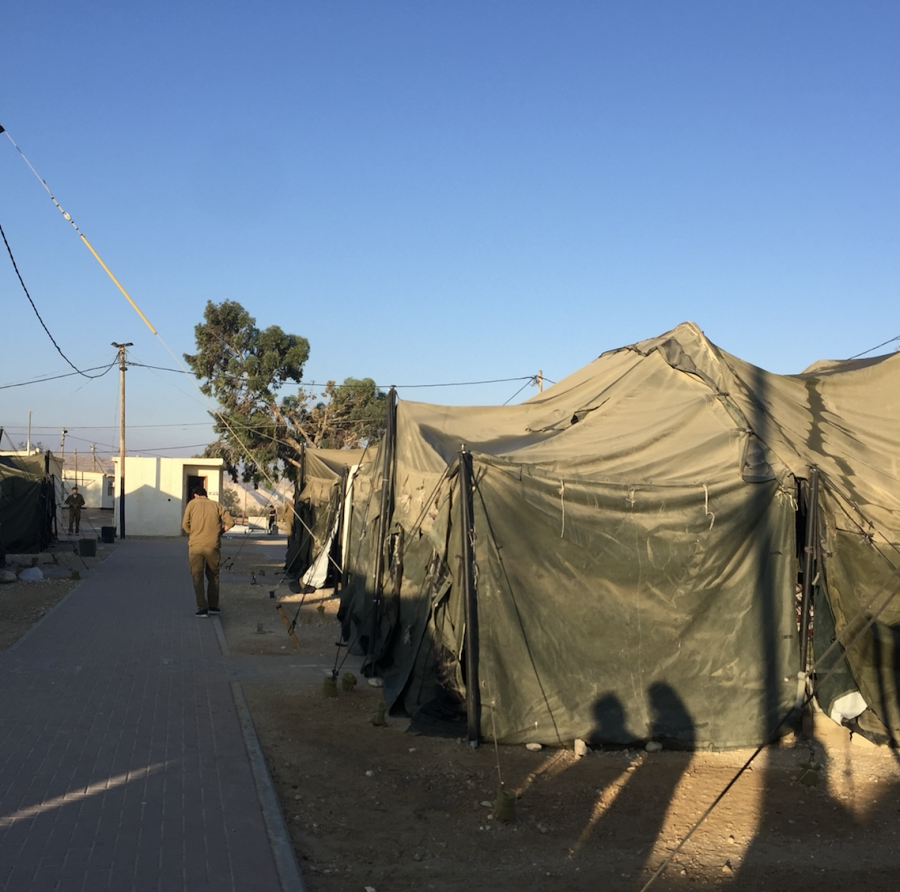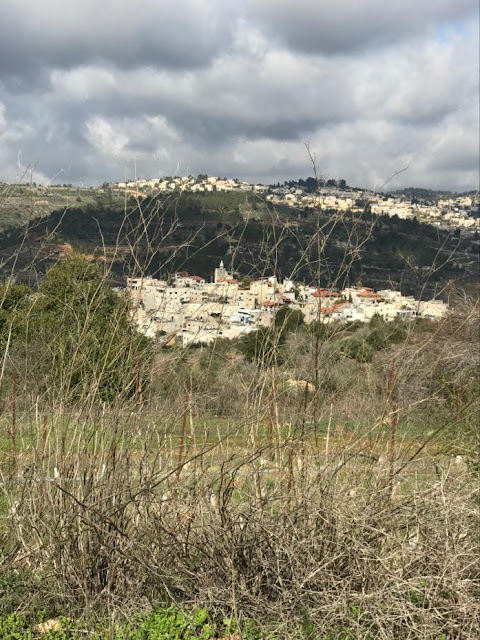Why I Love Teaching at URJ Heller High
by David Alon
“David, you should really teach this stuff. Seriously, this should be your job somehow, to teach people about Israel.”
Those were the words of my good friend Ora back in 2004, not long after we had made aliyah and were studying together in Hebrew ulpan. It was true, I always had a passion for learning about Israel and going on tiyulim around the country. It seemed to make sense to me that everything I learned about Jewish history could surely be applied to the modern Jewish state. Indeed, every time I would bring up another parallel lesson from history, she would recite the same line again, “David, you should teach this stuff!”
I should be so lucky, I thought, to find a way to teach others my love for Eretz Yisrael and Am Yisrael.
Now in my second decade as a Jewish history teacher at URJ Heller High, I can honestly say that those words have come true. Heller High is as much a part of me as I am part of the school. I feel extremely grateful that I have found something so rewarding that I look forward to everyday. Reflecting on the goals and challenges during my time at our school, I’ve come up with five good reasons why I love my job so much:
1. The Students
The best advice I ever got as an educator is, "You don't teach the material, you teach the students." Nothing could be more true about the teacher-student relationship at Heller High. We always strive to build a personal realtionship with our students, both in and out of the classroom. In fact, I make a point of having lunch with each student during the first week so I get to know them as individuals, and not just as pupils in a classroom. Heller students are certainly curious about Israel and Jewish identity, I often find myself talking about these things on our busrides or while on a hike. This comfort level let's students know that we are here for them as mentors and they can come by our office anytime to chat. When I see their maturity and inquisitiveness, I know that I have to challenge myself to come up with the most creative lesson plan possible. Because of this relationship, I know that I will never give up on a student no matter what kind of challenges they have. I can't say enough how rewarding it is to stay in touch with students as they continue on their journey after Heller High. My former students tell me about how they themselves have become leaders and educators in their community, and use some of the lesson plans from Heller in their own lives. Just this past year I was invited to speak virtually at one of my former student's college graduation party. When students come back to Israel on subsequent visits, they always give me a call and try to meet up with me. It is certainly an honor and a privilege to get to know so many amazing teens who have successfully challenged themselves by coming to Heller High.
2. Kibbutz Tzuba
For anyone who has seen the long hallways of lockers in public school, the Heller High campus at Kibbutz Tzuba is like an academic paradise. I try my best to experience Heller through the eyes of the students; I can just imagine what they feel when standing on their balconies and looking out at the Judean hills where our history unfolded in Biblical times. Tzuba itself is an archaeological wonder that as a teacher I try my best to take advantage of. Instead of reading about the Cave of the Patriachs in class, we hike, Bible in hand, to a burial cave at Tzuba from the First Temple period. My colleague Talia Jacobson likes to take us to an ancient wine press and have us stomp bare feet on grapes to see how it works! The view from on top of Tel Tzuba gives a panoramic lookout to Jerusalem and the surrounding villages. On Yom HaZicharon, Israel’s memorial day, it is possible to see from Tzuba the traffic on Highway 1 come to a complete stop as sirens go off around the country in a show of national remembrance. I keep my bike at work, and I always enjoy riding through Tzuba’s vineyards where I am reminded of the blessing that Jacob bestows on his son Judah in the Book of Genesis, “You shall be blessed to wash your clothes in the blood of grapes.” All of this right in our backyard! How lucky I am to be able to work in such a spectacular setting.
3. My Amazing Colleagues
In many ways the people that you work with day-in and day-out become like a second family. This couldn’t be more true of Heller High. For years I’ve had the good fortune of being part of a team of talented and committed educators who give their all to make our school a success. I have sat together with my fellow teachers in the dining hall discussing idealistically how to solve all of the problems in the world, and to ensure the Jewish future. We are constantly bouncing ideas off of each other, constantly asking one another, “How was your class today, what did you discuss in class today?” This positive atmosphere comes from our principal Rabbi Loren Sykes and vice-principal David Solomon who are always there to give us guidance, and also give us the freedom to develop our own individual teaching styles and lesson plans. As a faculty, we support each other and challenge each other to be the best educators we can be. Having the opportunity to work with such dynamic and caring people is definitely one of the things I enjoy the most about my job.
4. Hebrew
One of my students recently remarked to me that learning Hebrew at Heller High is “not like sitting in my Spanish class back at home.” Heller is committed to teaching Hebrew as an essential component of one’s Jewish identity. Sima Miller, our Hebrew Ulpan Coordinator, continues to stress that the Hebrew program is “Ivrit academit v’kef” עברית אקדמית וכיף, meaning there’s a focus on correct grammar and usage, but at the same time the lessons are infused with fun activities and interactions. For example, the Hebrew teachers take the students during class time to a cafe to teach how to order in Hebrew. How do I know that the students love their Hebrew teachers so much? Well, usually the first question I ask them each morning is “How was your Hebrew class today?”, to which I get a chorus of enthusiastic answers about how much they are learning and how they adore the Hebrew teachers. Beyond the fun and excitement of the classroom, Heller students ultimately come to realize that Hebrew is indeed essential to one’s Jewish identity, and that the Hebrew language is a key factor in their interaction with Israel and Israeli society.
5. Masa To Poland
I have guided 24 trips to Poland as a member of the Heller faculty, and I can honestly say it never gets old. In my discussions with students at the end of the semester, I often hear that the Masa מסע (journey) to Poland was the most impactful experience that they had during the semester. Many Israeli schools and organizations also go on Jewish heritage tours of Poland, but one of the criticisms of these trips is that the entire focus is on Holocaust education. On our Heller Masa to Poland, there is an equal emphasis on life and the thriving Jewish life that existed in Poland for centuries. To only visit concentration camps and ignore the kehilot would be a disservice to the memory of Polish Jewry. For me personally, my favorite day during the whole trip is the day spent in the Jewish quarter of Krakow exploring the amazing synagogues that have been restored and are a testament to the outstanding achievements of this great community. I also find that the Masa to Poland is the best opportunity I have as a teacher to get to know my students better on an individual level. It is impossible to find the right words to describe the emotions of the students at the moment that we land back in Israel having gone through this incredibly intense and meaningful week in Poland.
6. The Jewish History Curriculum
I am often asked, “How are you able to teach the same material over and over again each semester?” To which I reply, “you teach the students, not the material.” The greatest challenge that I have as Jewish history teacher at Heller High is to consistently make the material exciting and relatable. One of the first things I emphasize from day one is that the goal of the Jewish History class is not to teach history for the sake of learning history, but rather to build and strengthen Jewish identity. In fact, all three academic components at Heller (Hebrew, Jewish History, and general studies) have the same end-goal, namely strengthening Jewish identity. When it comes to teaching, I am reminded of a quote that my 10th grade history teacher used to recite:
“Tell me and I’ll forget. Show me and I’ll remember. Involve me and I’ll understand.”
To that end, I try to avoid just lecturing all the time. The Jewish history class is worthwhile because it is designed to be engaging with discussions and activities that stimulate participation. I judge the success of a lesson not on how much material I cover, but rather on how engaged the students in class are. Clearly though, the most inspiring aspect of Heller High’s Jewish History class is that a great deal of it is taught not in the classroom, but outside in Eretz Yisrael. The tiyulim טיולים (field trips) bring history to life in such a vivid manner that I often hear the students talking about which one was their favorite and what they took away from it. I see my job as a Jewish History teacher as Avodat Kodesh עבודת קודש (holy work). There’s nothing more important and meaningful than educating the next generation of Jewish leaders. I know that imparting knowledge about Israel and Jewish peoplehood to these pupils is giving them the necessary tools to perpetuate Jewish life. Being in the classroom and discussing these issues is one of the times when I feel most alive. I love being a Jewish History teacher at URJ Heller High because I never feel complacent. I feel that I learn the students as much as they learn from me.








